Emirate of Granada 1272 - 1482 AD was a tributary state of the Christian kingdoms of Spain
By Nick Nutter | Updated 11 Apr 2023 | Andalucia | History |
Login to add to YOUR Favourites or Read Later
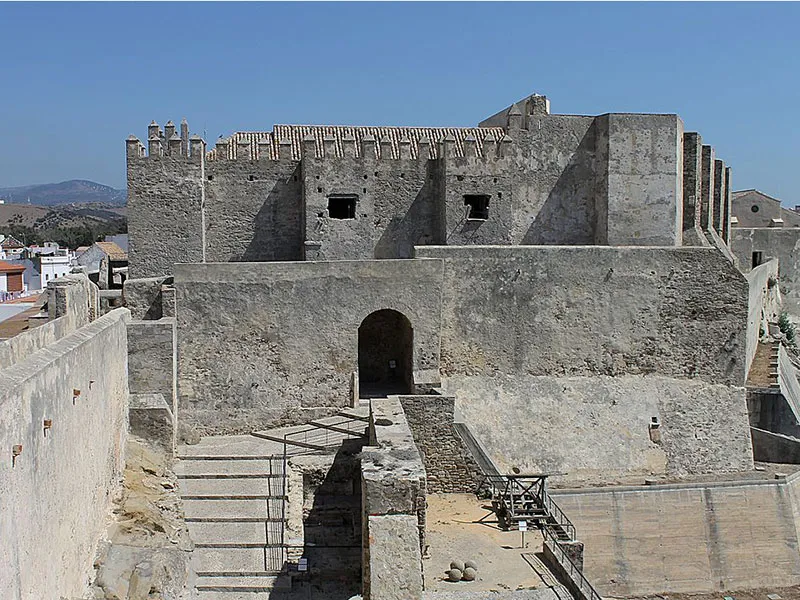
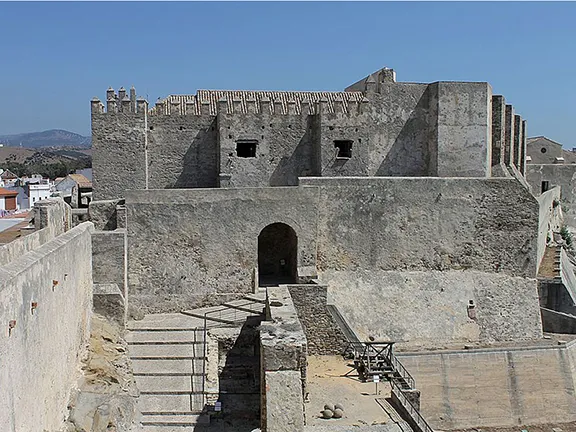
Tarifa Castle
The Muslims of Granada lacked sufficient forces to constitute a genuine danger to the Christians, who limited themselves to collecting tribute and launching an attack against the Muslims from time to time, snatching from them some city or other. The people of Granada, for their part, always bore in mind what had happened in the cases of the Almoravids and the Almohads, who, having arrived from Africa as auxiliary troops, became masters in al-Andalus. That did not stop them occasionally going on the offensive. The easiest way to think of the Emirate of Granada is as a tributary state of the Christian kingdoms or as a wayward child. The following 200 years or so resemble a game of chess writ large across the landscape with move and countermove.
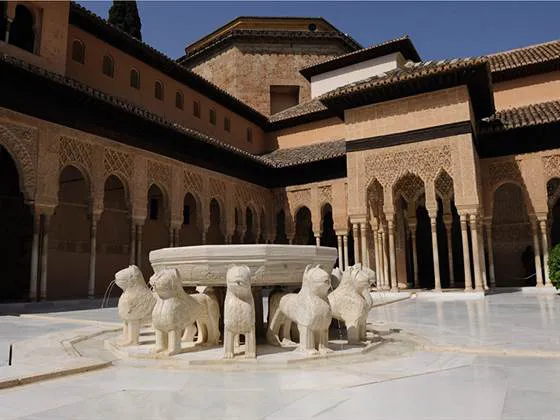
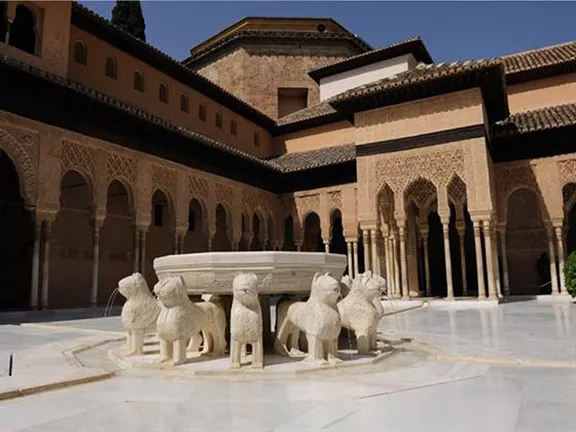
Alhambra Lion Courtyard
Where the new North African empires were concerned, particularly the empire of the Marinids, Granada maintained a policy of balance of power. Although they permitted the influx of volunteers from Africa to enrol in their army to fight against the Christians, an army that would become known as the ‘Army of Faith’, they never permitted the crossing of the Strait of Gibraltar by massive contingents. The incursions of 1275 and 1277 were little more than large raiding parties with no intentions of occupying the towns and villages they pillaged.
In 1275, a Marinid army occupied Tarifa and Algeciras and conducted raids into Christian territories as far as Jerez. Later that year the combined Marinid, Granadan forces won a battle at Ecija. The Marinids returned to Morocco after losing a sea battle off Tarifa but returned in 1277.
In 1277, the Marinids took several castles along the Guadalquivir river, encircled Córdoba and pillaged surrounding towns. They returned to Morocco in 1278 leaving garrisons behind in Tarifa and Algeciras to act as Marinid outposts. Tarifa was taken by Castile in 1292 and placed under the command of Alonso Perez de Guzman, better known as Guzman el Bueno.
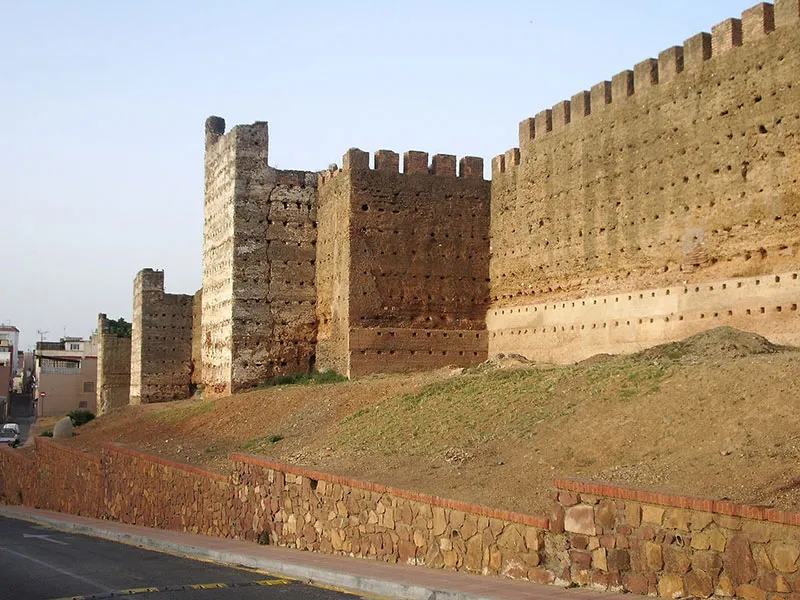
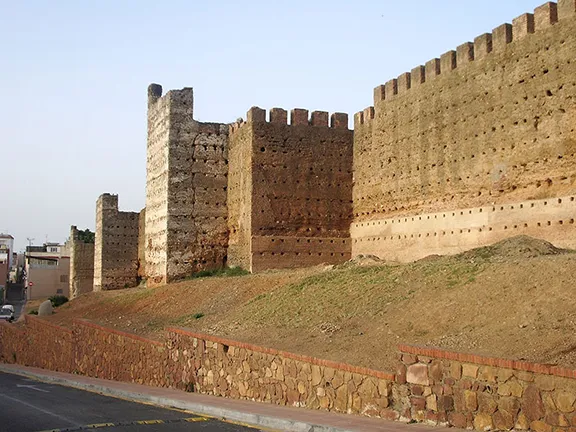
Marinid Walls at Ceuta
In 1294, Muhammad II of Granada went on the offensive taking advantage of Castile’s war against Aragon and the weakness of the Castilian child kings. He unsuccessfully besieged Tarifa. Guzman held Tarifa castle against the combined forces of the Muslims and the infante Don Juan (Sancho IV of Castile’s rebellious and traitorous brother). Guzman’s son had previously been placed in the care of Don Juan. A legend was created when Don Juan threatened to kill Guzman’s son if he did not surrender Tarfifa. Guzman is said to have thrown his own dagger over the battlements and shouted, ‘I did not beget a son to be made use of against my country, but that he should serve her against her foes. Should Don Juan put him to death, he will but confer honour on me, true life on my son, and on himself eternal shame in this world and everlasting wrath after death’.
Muhammad abandoned Tarifa and moved on to beat Castilian forces at the Battle of Iznalloz and conquered the border towns of Quesada (1295) and Alcaudete (1299). Muhammad then negotiated a treaty with Aragon that recognised the Emirates right to Tarifa. James II of Aragon however did nothing further and Tarifa remained in Castilian hands.
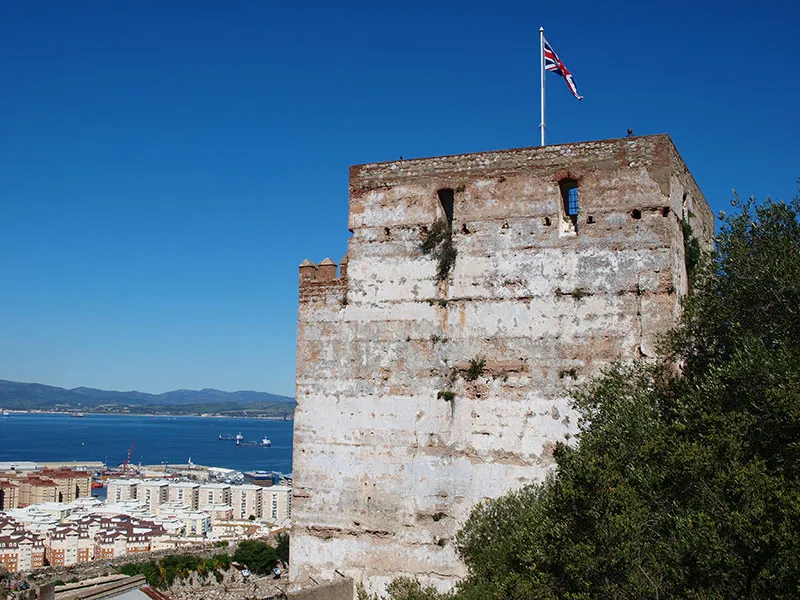
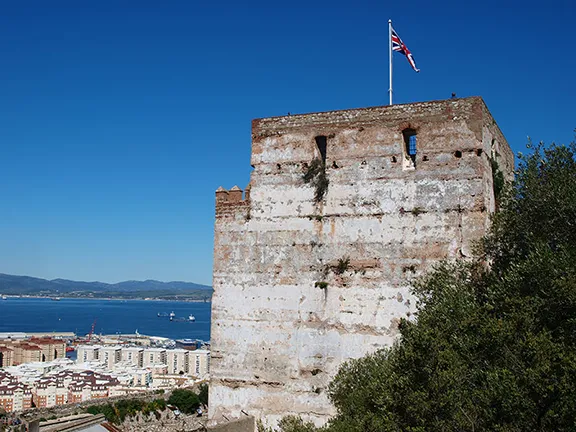
Homage Tower Gibraltar
In 1302, Muhammed III came to the throne of Granada. He continued his father's war against Castile, the alliance with Aragon and the Marinids, and support for Alfonso de la Cerda, a pretender to the Castilian throne.
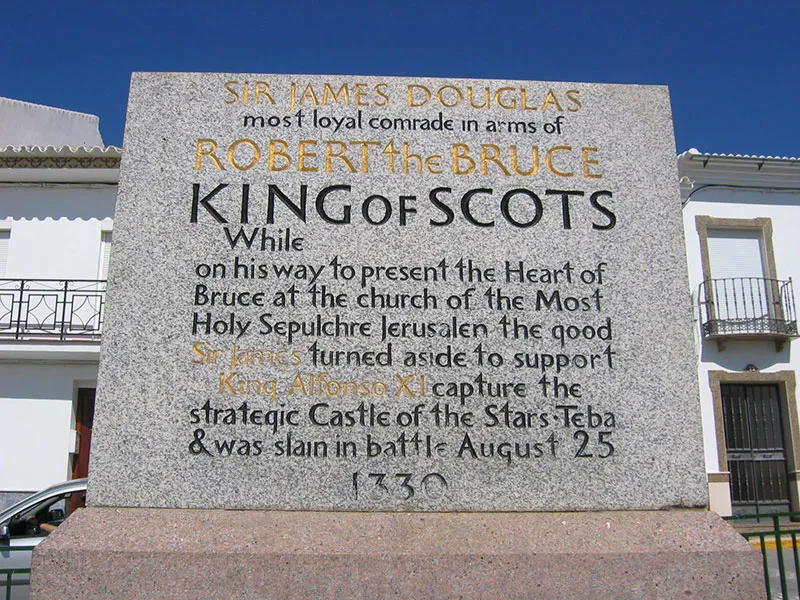
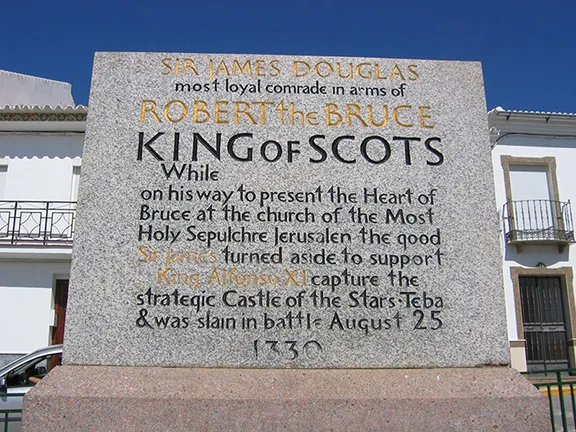
Memorial in Teba
Control of the Straits of Gibraltar remained a priority and, in 1306, Muhammad III broke any alliance he had with the Marinids and conquered Ceuta, thereby securing both sides of the Straits. Granada lost the outpost to the Kingdom of Morocco, helped by the Crown of Aragón, James II, soon after Muhammad died in 1309.
In the same year, Guzman el Bueno helped Ferdinand IV of Castile capture Gibraltar.
The new emir of Granada, Abu al-Juyush Nasr ibn Muhammad, retook Ceuta in 1310 and lost it in 1314, only to regain it the following year, 1315. On this occasion Granada held Ceuta until 1327 when Morocco again took possession. It remained in Morocco’s hands until 1384 when Granada again conquered this much disputed peninsula that projects out from Morocco east into the Straits, much as Gibraltar projects south into the Straits just 21 kilometres away. Ceuta remained under Granadan control until finally losing it to Morocco in 1386.
Meanwhile, back on the Iberian Peninsula, Alfonso XI of Castile declared war on the Emirate in 1325. He invited other Christian kings to join him in a new crusade. Whilst negotiations were taking place, in 1327, Alfonso launched a pre-emptive strike and took Olvera (Cadiz province), Pruna (Seville province) and Torre Alhaquime (Cadiz province). Castile launched a second offensive in 1330 to take Teba, a strategic castle and town a few kilometres north of Málaga. Alfonso established his headquarters at Córdoba and gathered his forces that included 500 knights from Portugal. The force also included one Sir James Douglas, a Scottish knight who was on a quest to honour the last request of Robert Bruce, King of the Scots, that, after his death, Robby’s embalmed heart should be taken on a crusade that he never managed to take in life.
The Battle of Teba resulted in an undecisive victory for the Christians. Teba was taken and held but the land around was still being disputed over 100 years later. Douglas was killed in the battle and his flensed bones were returned to Scotland along with the casket containing Robert the Bruce’s heart. There is a memorial plague in Teba to commemorate Douglas’s participation in the battle.
The victories achieved by Alfonso between 1327 and 1330 worried Abu Hasan, the emir of Morocco, who sent troops to help Muhammad IV retake Gibraltar in 1333. Seven years later, in 1340, Abu Hasan allied to Yusuf I, the emir of Granada, sent forces against Tarifa.
Yusuf and Hasan were decisively beaten by Alfonso XI of Castile and Alfonso IV of Portugal at the Battle of Tarifa (sometimes called the Battle of Rio Salado). This was the last incursion made by the Marinids from Morocco into the Iberian Peninsula.
Between 1348 and 1351 the Black Death swept through the Iberian Peninsula taking a proportionately greater toll of life than any other known epidemic or war up to that time. Both Christians and Muslims reeled from the loss of population that fell from six million to two and a half million. For many years neither side were in a position to take any offensive actions.
Alfonso XI died in 1350 and his successors had little interest, or the means, to continue the reconquest. Within a few years an internecine quarrel began within Castile that eventually saw Alfonso’s successor, Peter the Cruel, killed in 1369 by Henry of Trástamara. Henry (Henry II - The Bastard) became the next king of Castile despite a counterclaim to the throne from John of Gaunt, Duke of Lancaster, of England.
This internal dispute and removal of any threats, created a favourable climate for Granada, which found itself free from political pressures of both Moroccans and Castilians.
During the reign of Muhammad V (1354–59 and 1362–91) Granada attained its greatest splendour; its ministers included some of the most learned men of the epoch, such as the polymath Abu Abd Allah Ibn al-Khatib, the physician Abu Ja’far ibn Khatima, and the poet Abu Abd Allah ibn Zamraq. Important figures from North Africa were in close touch with Granada.
Much of the Alhambra palace complex was completed during this period and the city of Granada was one of the largest cities at the time. It accepted numerous Muslim refugees expelled from Christian controlled areas, doubling the size of the city and became the largest city of Europe in 1450 in terms of population. At its height there were 137 mosques in the Medina of Granada.
During this era there also developed the institution of the ‘judge of the frontier’ (juez de la frontera y de los fieles del rastro); the judge was a Muslim official who heard Christian complaints against the Granadans. This procedure did much to reduce frontier incidents between Muslims and Christians.
Granada’s wealth continued to come from its trade networks throughout the Mediterranean. Genoese bankers, eager to gain control of the trans Saharan gold trade financed the Granadans until the Portuguese opened up trade routes along the west African coast in the 15th century.
At the beginning of the 15th century, Castile resumed the offensive against the Emirate of Granada. Much of the motivation for this is due to conflicts between Castile, Aragón and the Catalans. Henry II of Castile had died in 1406. His successor, John II, was an infant and the regency was divided between Henry’s younger brother, Ferdinand ,and Queen Catherine of Lancaster. Prince Ferdinand of Castile seized the fortress of Antequera in 1410, an action that gained him the sobriquet of ‘Infante de Antequera’ and helped assure his appointment as King of Aragón in 1412. Jimena de la Frontera (Cadiz province) and Huéscar (Granada provnce) fell in 1435, Huelma (Jaen provinve) in 1438 and Gibraltar in 1462.
Once again, increased Christian pressure on the Emirate caused the Muslim population to become increasingly less tolerant of the very few Christians remaining in the Emirate, an attitude that spread across the Straits of Gibraltar into North Africa. Islamic ideals were rigorously adhered to and the Muslims became ever more xenophobic. Whilst this policy worked in North Africa, in as much as it warded off external enemies, after 1479 it provided the Christian monarchs, Ferdinand and Isabella, with another reason to take the Emirate of Granada, to preserve the Christian faith within Spain.
The decline in the financial fortunes of Granada coincided with the marriage of Isabella I of Castile and Ferdinand II of Aragón in 1469, a union that ostensibly created a strong kingdom. However, the nobles within Castile were restless and forever in disputes with each other. This came to a head in 1474.
When Ferdinand married Isabella in 1469, she was not yet Queen of Castile. She was the half sister of the king of Castile, Henry IV. When he died in 1474 the Castilian War of Succession, between Isabella and Henry’s daughter, Joanna la Beltraneja, erupted. Isabella, supported by Aragón, and some of the Castilian nobility eventually won despite Joanna being supported by another batch of the Castilian nobility, France and Portugal. The war ended in 1479. Between 1475 and 1479, little attention had been paid to the Emirate of Granada. Their raids into Castilian territory between those years, normally an excuse to impose tariffs on Granada, had been ignored with peace treaties hurriedly agreed in 1475, 1476 and 1478. In 1479, when the Castilian War of Succession ended, the kingdoms of Castile and Aragón were united and free of the inter-Christian strife that had been a major reason for Granada surviving.
But, in the end, it was actually the Emirate of Granada that precipitated its own, final downfall.
In 1481, faced with a declining economy, Ali Abu’l-Hasan, the emir of Granada, refused to pay the annual tribute he owed to the Christian Monarchs. He attacked and seized Zahara de la Sierra, now in Cadiz province. This provided the final motivation and excuse that Ferdinand and Isabella needed to bring their respective nobles to heel and rid the Iberian Peninsula of the Muslims once and for all.
In 1482, the Granada War began, a war of attrition that was to last ten years.
Further reading and references
Carr, Matthew Blood and Faith: The Purging of Muslim Spain New York, London 2009
Fletcher, Richards Moorish Spain London 1992
Lomax, Derek La Reconquista Barcelona 1984
Lowney, Chris A Vanished World: Muslims, Christians, and Jews in Medieval Spain Oxford 2006
MacKay, Angus Spain in the Middle Ages; From Frontier to Empire, 1000-1500 London 1977
Menocal, Maria Rosa The Ornament of the World Boston, London 2002
Images
Ceuta Marinid Walls: By carlos corzo - Primeras murallas, CC BY-SA 3.0, https://commons.wikimedia.org/w/index.php?curid=22551173
Teba monument: By Diana Beach - Own work, CC BY-SA 3.0, https://commons.wikimedia.org/w/index.php?curid=17541874